One More Time: China and Africa Collaborating for a Sustainable Future
Africa has the Green Goods, China has the Green Tech. So can this Collaboration finally be a better deal for a historically exploited Africa?
Africa's exports of valuable resources such as gold, diamonds, and oil have resulted in significant environmental damage. However, the continent now has a unique opportunity to capitalize on green raw materials, in response to the growing global demand for clean energy products, particularly from China, and the need to secure these materials' supply chain. As African countries face expanding energy needs and constrained grid infrastructure, they can strategically develop decentralized power systems, positioning themselves as clean energy hubs.
In recent years, China has solidified its dominance in exporting electric vehicles, batteries, and energy storage systems. Concurrently, China has established itself as the primary trading partner of Africa—a continent abundant in green-tech minerals such as cobalt, vanadium, and manganese. Signs of emerging collaboration between the two are evident.
Exporters of cobalt, vanadium, and manganese in 2021
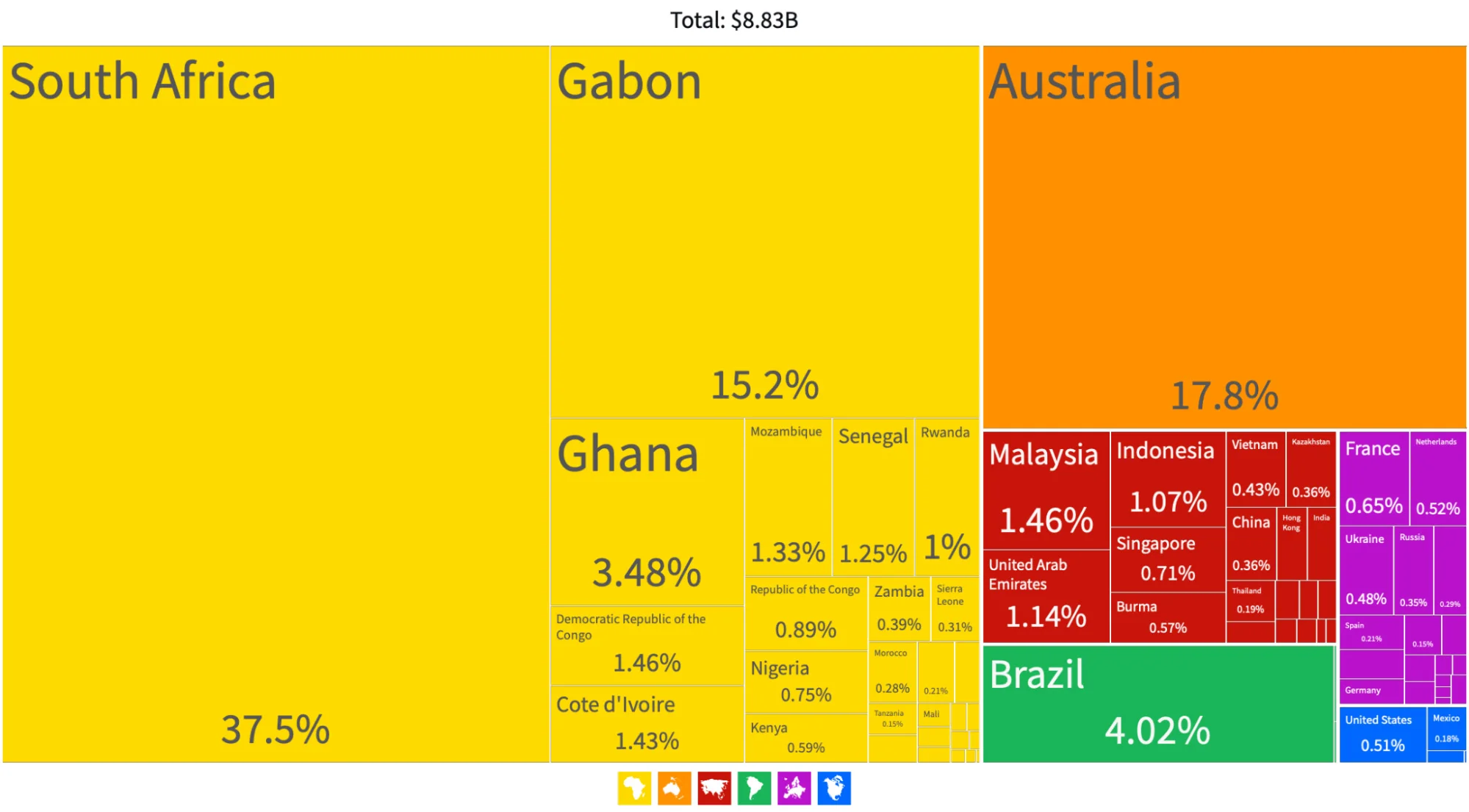
Importers of cobalt, vanadium, and manganese in 2021
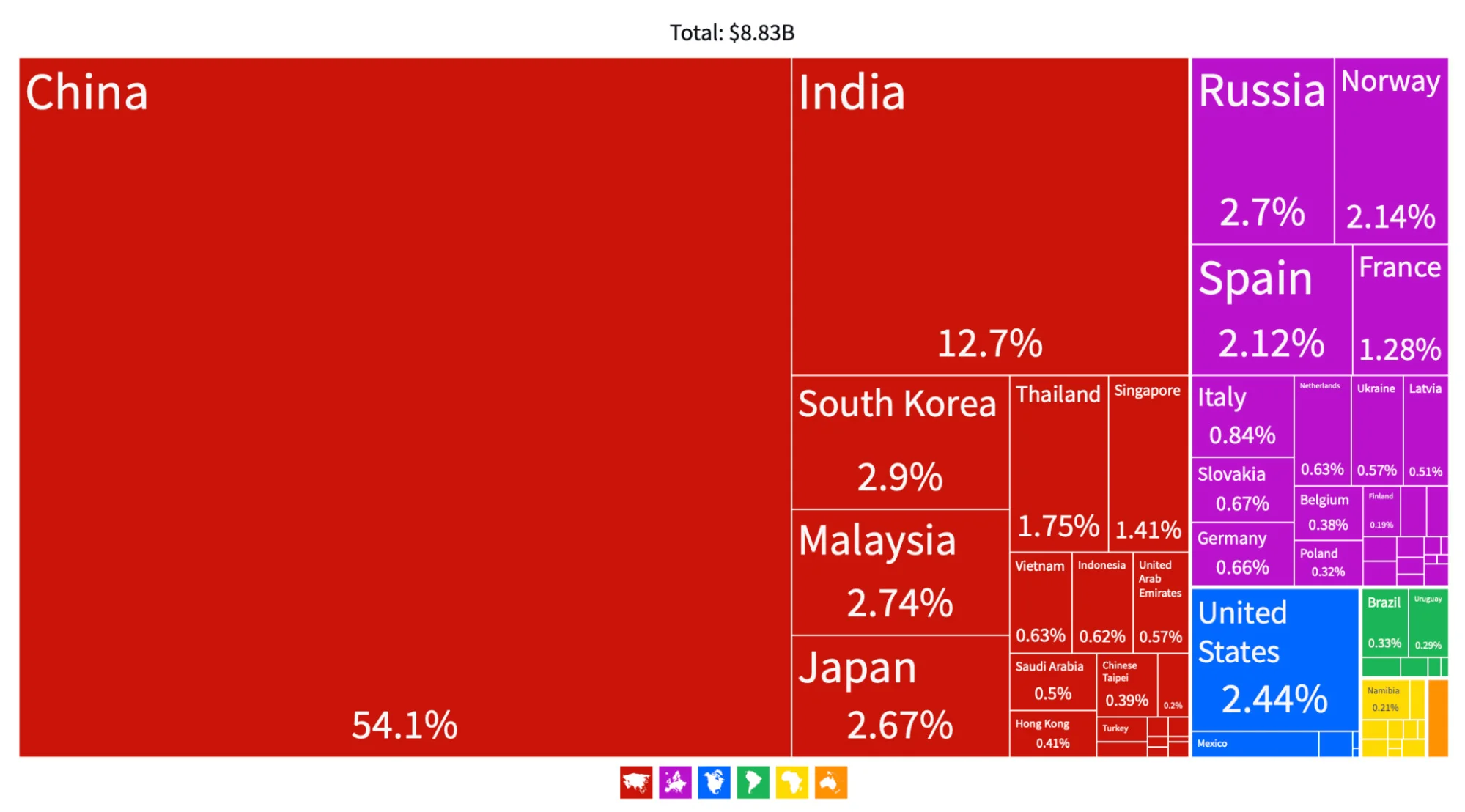
China's strategic investments in renewable energy projects have already accelerated the adoption of clean energy technologies in Africa. For example, China funded the Garissa solar plant, which stands as East Africa's largest grid-connected solar farm.
But balancing renewables and fossil fuels on power generation projects is a challenge. In the last 20 years, for example, of China's $49 billion in energy projects invested in Africa, fossil fuel-based projects received 70% ($34.5 billion), while clean energy projects received $14.458 billion. Among 56 Chinese-funded power plants in Africa, more use coal (9%) than solar and wind power (8%).
Trade Dynamics and Access to Resources
China's trade partnership with Africa is full spectrum, embracing clean energy projects to extracting raw materials crucial for green industries. China-Africa trade reached $283 billion in 2022, driven by China's copper, aluminum ore, and iron demand.
China's Imports from African Countries (2022)
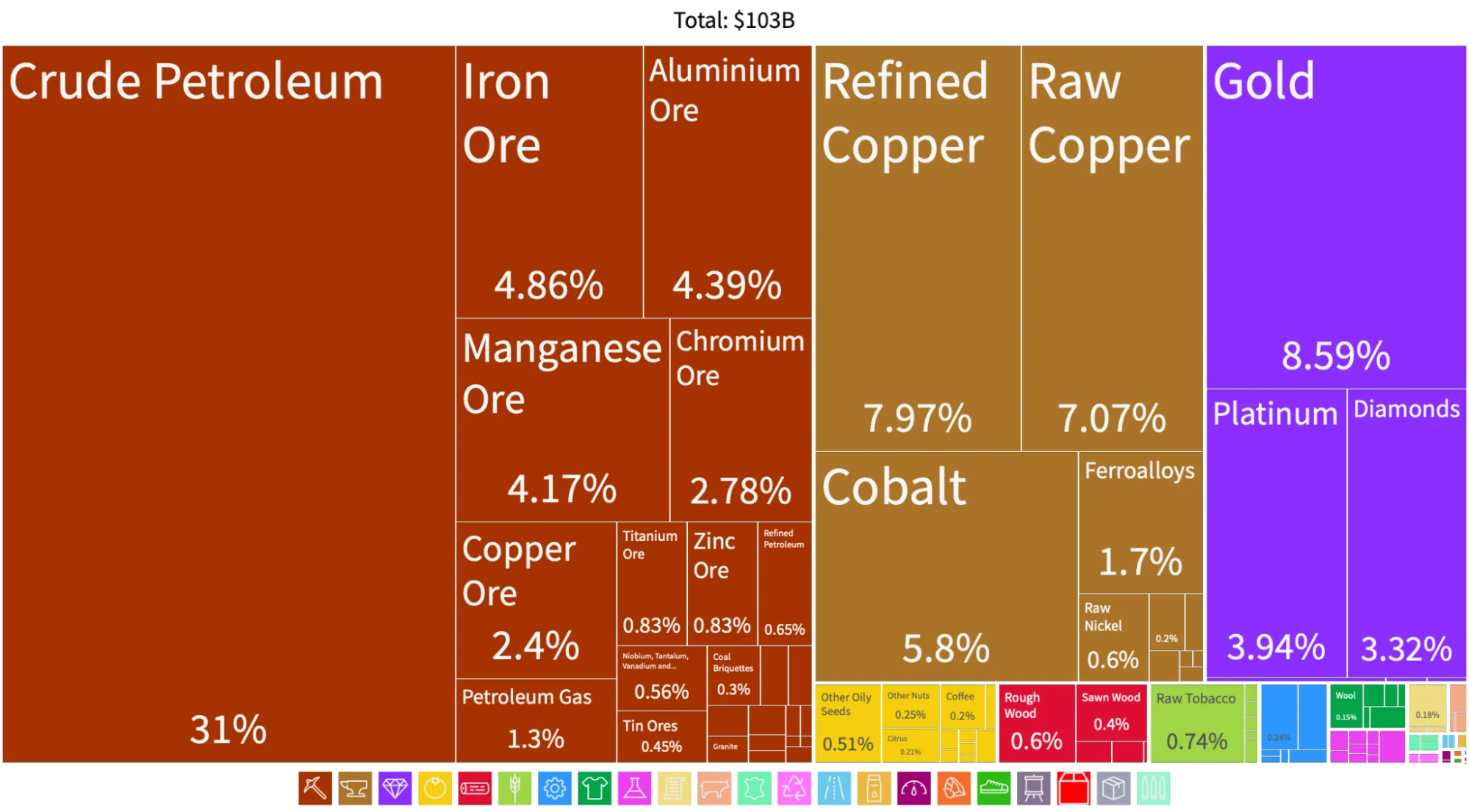
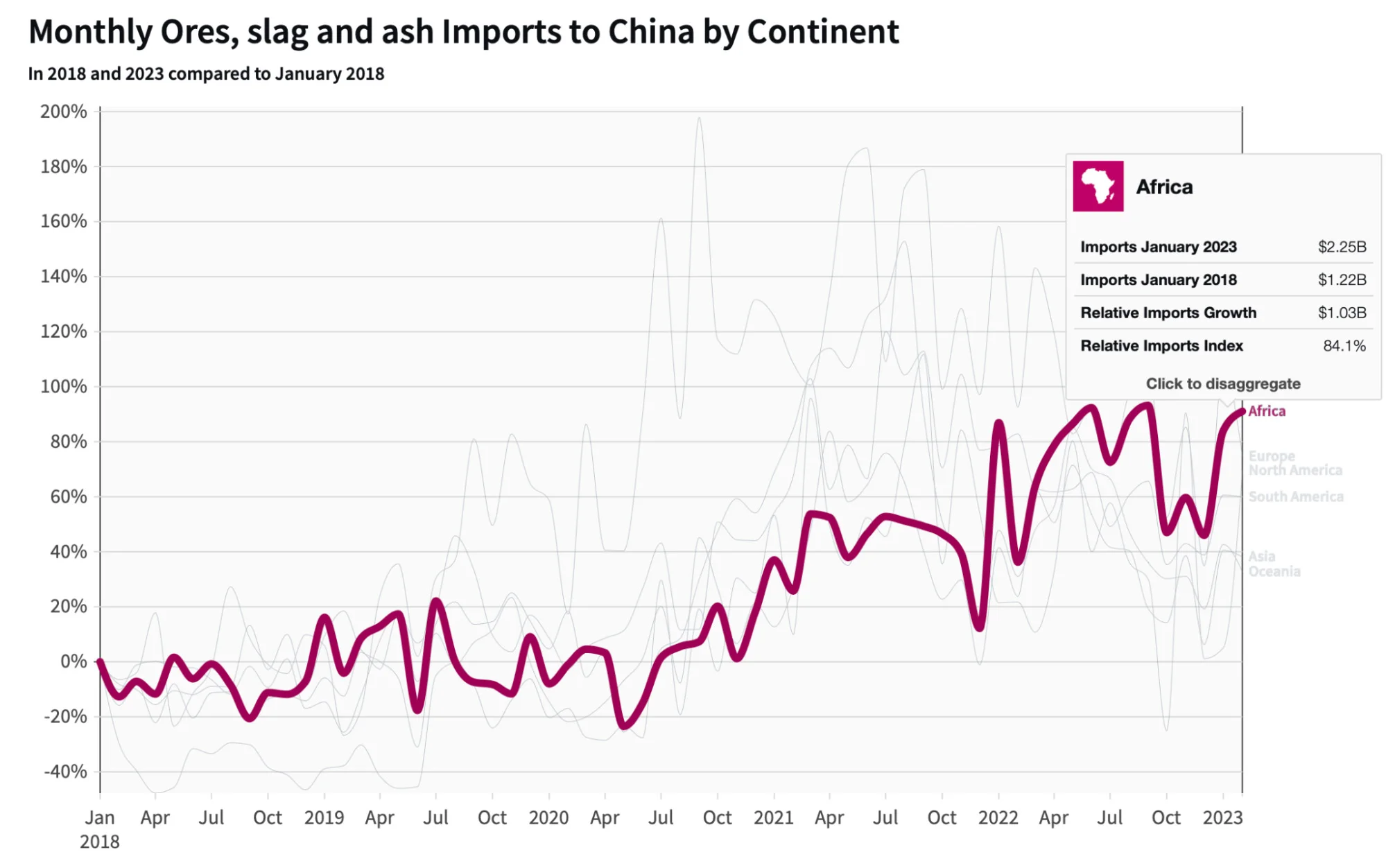
During the last few years, African countries have become more relevant for China's supply chain of green technologies. But China's exports of green technology to African countries haven't been as impressive.
China exports clean energy technologies, including electrical transformers, to Africa. However, Africa receives only 12% of China's exports of the particular transformers that are vital for solar power conversion. The production of these transformers depends on materials like copper, aluminum, and iron.
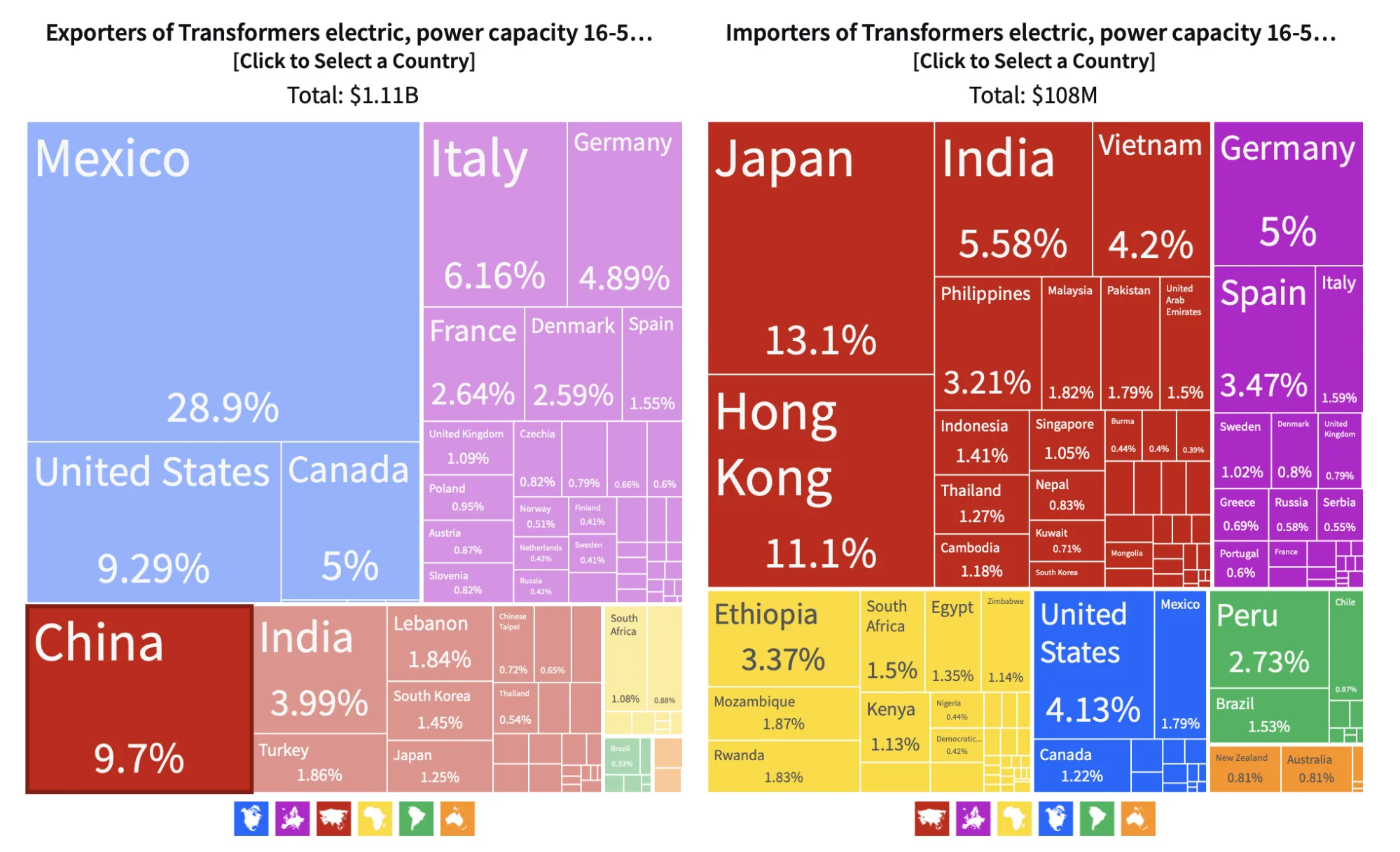
Fostering Sustainable Collaboration
African countries could better prioritize renewable energy projects to strengthen their partnership with China and transition to clean energy. In addition, ethical mining and fair labor practices are crucial for responsibly sourcing green-tech minerals. Finally, technology transfers and capacity-building can enhance local expertise, supporting Africa's renewable energy objectives.
As the world addresses the challenges of climate change, the collaboration between China and Africa may contribute to progress in achieving sustainability. By addressing the challenges and utilizing opportunities, Africa has the potential to strengthen its trade partnership with China and contribute to the global energy transition. Most importantly, this green trade growth holds the promise of finally breaking the centuries-old pattern of Africa ending up with minimal benefits as new industries elsewhere grow and prosper.
